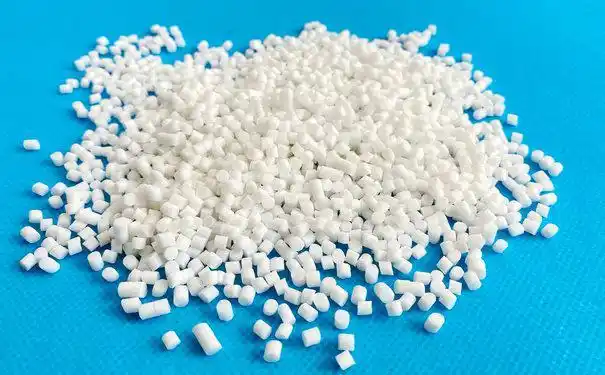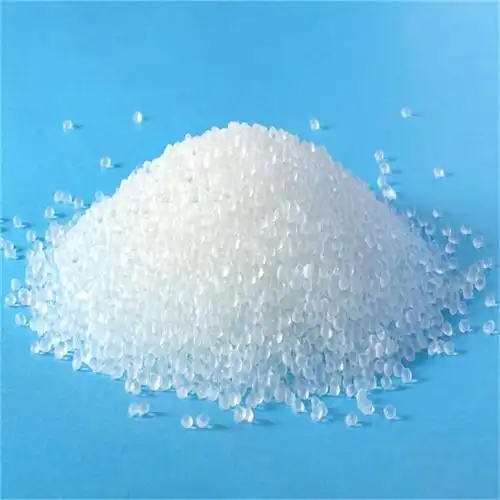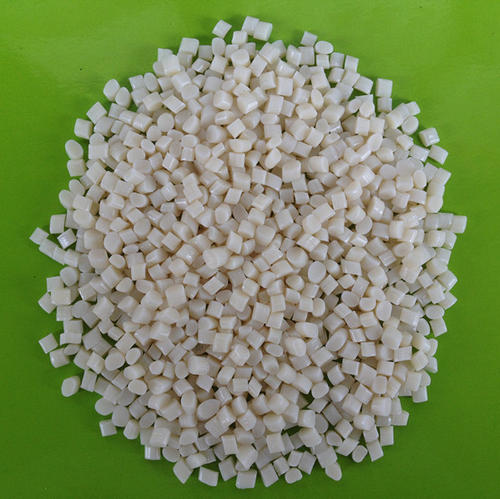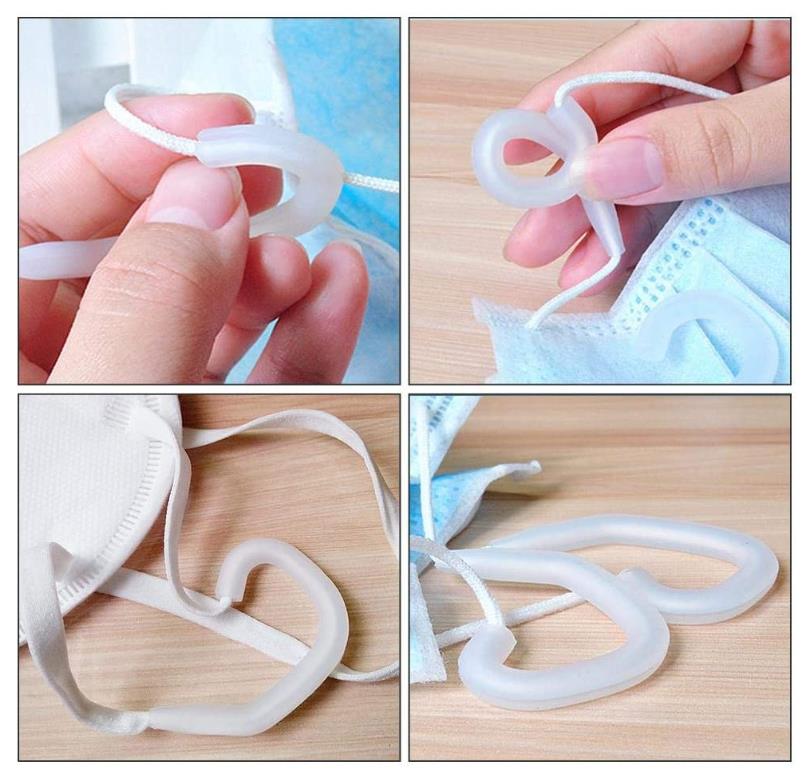As a plastics engineer with over ten years of experience in injection molding and material compounding, I’ve navigated plenty of production hiccups, especially with thermoplastic elastomers (TPEs). TPEs are a go-to material for their rubber-like flexibility and versatility in products like grips, seals, and plugs. But one issue that can throw a wrench in manufacturing is when TPE raw material and color masterbatch get mixed together—often by accident during material handling or storage. This mix-up can lead to inconsistent coloring, poor part quality, or even equipment damage if not handled properly. I’ve faced this exact problem on the factory floor, and I know how stressful it can be to figure out next steps without wasting material or time. In this article, I’ll share why this happens, how to address it, and how to prevent it, drawing from my real-world experience to help you get back on track.

Why Mixing TPE and Color Masterbatch Is a Problem
TPE raw material (usually natural or transparent pellets) and color masterbatch (concentrated pigment pellets) are meant to be blended in precise ratios—typically 1-5% masterbatch by weight—during injection molding to achieve consistent color. When these materials are accidentally mixed in bulk, say, in a storage bin or hopper, you lose control over the blend ratio. This can cause:
Inconsistent Color: Parts may have streaks, patches, or uneven hues, failing quality checks.
Material Waste: The mixed batch may be unusable for production, costing money.
Processing Issues: High masterbatch concentrations can alter TPE properties, like viscosity or elasticity, leading to defects.
Equipment Damage: In extreme cases, incompatible masterbatch carriers can clog screws or degrade the TPE.
I once dealt with a batch of TPE for phone cases where a worker mistakenly dumped a bag of blue masterbatch into a TPE storage bin. The result? A mottled mess of pellets that produced streaky parts until we sorted it out. Below, I’ll walk you through how to handle this situation and prevent it from happening again.
Causes of TPE and Color Masterbatch Mixing
This issue usually stems from human error, poor material handling, improper storage, or lack of process controls. Let’s explore each cause and how to address it.
1. Human Error
Mistakes happen, especially in busy factories. A worker might grab the wrong bag, misread labels, or pour masterbatch into a TPE bin during a hectic shift. I’ve seen this in a high-volume plant where similar-looking bags of TPE and masterbatch were stored side by side, leading to mix-ups.
Fixes:
Clear Labeling: Use bold, color-coded labels on all material bags (e.g., “TPE – NATURAL” in black, “MASTERBATCH – BLUE” in blue). I’ve implemented label systems with large fonts and pictograms for clarity.
Training: Train staff on material identification and handling protocols. I hold quarterly refresher sessions to reinforce best practices.
Double-Check Procedures: Require two workers to verify materials before loading hoppers. This caught a mix-up in one of my projects before it reached production.

2. Poor Material Handling
Improper handling during transport or loading can lead to cross-contamination. For example, using the same scoop for TPE and masterbatch or spilling pellets between bins can cause mixing. I’ve seen hoppers contaminated because workers didn’t clean equipment between material changes.
Fixes:
Dedicated Tools: Use separate scoops, funnels, and containers for TPE and masterbatch, color-coded to match material types. I assign red tools for TPE and blue for masterbatch.
Clean Equipment: Flush hoppers, feeders, and screws with a purging compound or virgin TPE before switching materials. I’ve used Dyna-Purge for quick cleanouts.
Spill Prevention: Use sealed bags or containers with tight lids to transport materials. I’ve switched to vacuum-sealed bins to minimize spills.
3. Improper Storage
Storing TPE and masterbatch in close proximity or without clear separation invites mix-ups. I once visited a factory where open bags of TPE and masterbatch were stacked together, and pellets spilled into each other during handling.
Fixes:
Separate Storage Areas: Store TPE and masterbatch in distinct zones, ideally with physical barriers like shelves or walls. I’ve set up dedicated racks for each material type.
Sealed Containers: Keep materials in sealed, labeled bins or silos to prevent cross-contamination. I use airtight bins with clear windows to check contents.
Inventory Management: Implement a first-in, first-out (FIFO) system to avoid old, potentially contaminated materials. I track inventory with barcodes to ensure proper rotation.

4. Lack of Process Controls
Without strict protocols, mix-ups can go unnoticed until production. I’ve seen factories skip material verification steps, only to discover mixed batches after molding defective parts.
Fixes:
Material Verification: Use a checklist to confirm TPE and masterbatch types before loading. I’ve implemented digital scanners to match material barcodes.
Blending Controls: Install gravimetric or volumetric feeders to meter masterbatch precisely during molding, reducing reliance on pre-mixed batches. I’ve used gravimetric feeders for consistent 2% masterbatch dosing.
Quality Checks: Test small batches before full production to catch mix-ups early. I run color swatches to verify blend ratios.
| Cause | Why It Leads to Mixing | Fix | Key Action |
|---|---|---|---|
| Human Error | Misidentification or mistakes | Clear labels, training | Use color-coded labels, double-check |
| Poor Handling | Cross-contamination during transport | Dedicated tools, clean equipment | Flush with purging compound |
| Improper Storage | Spills or mix-ups in storage | Separate zones, sealed bins | Store in airtight, labeled containers |
| Lack of Controls | Unnoticed mix-ups | Verification, blending controls | Use gravimetric feeders, test batches |
What to Do When TPE and Masterbatch Are Mixed
If you’ve discovered a mixed batch of TPE and masterbatch, don’t panic. Here’s my step-by-step approach to handle it, based on real-world solutions:
1. Assess the Situation
Estimate Mixing Ratio: Check how much masterbatch is mixed with the TPE. A small amount (e.g., <5%) may be salvageable, while a high concentration (e.g., >20%) may render the batch unusable for your product.
Inspect Material: Look for clumping, contamination, or degradation (e.g., discolored or sticky pellets). I use a magnifying glass to check pellet uniformity.
Identify Application: Determine if the mixed batch can be used for non-critical parts or if it must meet strict specs (e.g., color consistency for plugs).
2. Test the Mixed Batch
Run a Trial Mold: Blend a small portion of the mixed material and mold a few parts to check color consistency, surface quality, and mechanical properties. I’ve tested mixed batches for TPE grips to see if streaking was acceptable for secondary products.
Measure Color: Use a colorimeter or spectrophotometer to compare the molded parts’ color to your target. If within tolerance, the batch may be usable.
Check Properties: Test tensile strength, elasticity, or hardness (e.g., Shore A) to ensure the masterbatch didn’t alter TPE performance. I’ve used ASTM D412 for tensile testing.
My Tip: If the mix is minor (e.g., 1-2% masterbatch), it might work for parts with loose color specs, like internal components.

3. Salvage the Material if Possible
Dilute the Batch: If the masterbatch concentration is too high, blend the contaminated batch with virgin TPE to achieve the desired ratio (e.g., 2% masterbatch). I’ve diluted a 10% mixed batch with 4 parts virgin TPE for a 2% final blend, using a gravimetric feeder for accuracy.
Use for Non-Critical Parts: If color consistency isn’t critical, use the mixed batch for prototypes, secondary products, or non-visible parts. I’ve repurposed mixed TPE for test molds to avoid waste.
Adjust Processing: If the mixed batch has higher viscosity, lower melt temperature by 5-10°C (e.g., from 200°C to 190°C) and increase injection pressure by 5-10 MPa to compensate.
4. If Unusable, Recycle or Dispose
Regrind and Reuse: If the mixed batch can’t meet specs, regrind it into uniform pellets and blend with virgin TPE for low-spec applications. I’ve reground mixed TPE for filler parts, ensuring zero waste.
Work with Recyclers: If regrinding isn’t viable, send the material to a plastics recycler specializing in hazardous materials. I’ve coordinated with local recyclers to process contaminated TPEs.
Document Loss: Record the incident to quantify material loss and improve processes. I use a digital log to analyze waste trends.

5. Clean Equipment
If the mixed batch reached the molding machine, clean the machine to prevent contamination:
Flush Screw/Barrel: Run a purging compound like Dyna-Purge or virgin PP for 10-15 minutes at 50-100°C to clear residue.
Clean Hoppers/Feeders: Vacuum and wipe hoppers with isopropyl alcohol to remove stray pellets.
Inspect Nozzle: Check for clogs or residue, using a brass wire brush if needed.
My Tip: Keep purging compound on hand for quick cleanouts to minimize downtime.
6. Implement Preventive Measures
To avoid future mix-ups:
Segregate Materials: Store TPE and masterbatch in separate, labeled areas with clear barriers.
Automate Blending: Use gravimetric feeders to meter masterbatch at the machine, eliminating pre-mixing risks.
Audit Processes: Conduct weekly checks on material handling and loading procedures.

Preventing TPE and Masterbatch Mixing
To prevent future mix-ups, here’s my long-term strategy:
Standardize Labeling: Use barcode labels color-coded and barcoded labels to identify TPE (e.g., white labels) and masterbatch (e.g., colored labels).
Dedicated Storage: Store materials in sealed, labeled silos or bins in separate zones, with clear signage.
Automated Feeding: Install volumetric or gravimetric feeders to dose masterbatch precisely during molding. I’ve used Brabender feeders for 1-5% dosing accuracy.
Staff Training: Conduct regular workshops on material handling, emphasizing verification and cleaning protocols.
Quality Control: Implement pre-production checks to verify material types and ratios, using color swatches or test molds.
Common Issues from Mixed TPE and Masterbatch
Mixing can lead to secondary problems. Here’s what I’ve seen and how to address them:
Color Streaks: Uneven masterbatch distribution causes streaks. Dilute with virgin TPE and use a gravimetric feeder for uniform blending.
Reduced Elasticity: High masterbatch levels can stiffen TPE. Test hardness (e.g., Shore A) and regrind for non-critical parts if affected.
Clogged Equipment: Incompatible masterbatch carriers can clog screws. Flush with purging compound and inspect the screw.
Surface Defects: Excess masterbatch can cause bloom or haze. Lower melt temperature by 5-10°C and clean the mold.

My Experience: Resolving a Mixed Batch Mess
One of my most memorable projects was for TPE seals used in automotive connectors. A worker accidentally mixed a 25 kg bag of red masterbatch into a 500 kg TPE bin, creating a pinkish mess. We estimated a 5% masterbatch concentration, too high for the target 2% ratio. We diluted the batch with virgin TPE to hit 2%, ran trial molds, and used a colorimeter to confirm the color was within spec. The seals passed quality tests, and we avoided scrapping the batch. In another case, a mixed batch with 10% masterbatch was unusable for cosmetic parts but worked perfectly for internal prototypes, saving costs. These incidents taught me the importance of quick assessment and flexible solutions.
Dealing with mixed TPE and masterbatch can be a headache, but with careful assessment, testing, and preventive measures, you can minimize waste and keep production on track. Hopefully, my insights give you a clear path to handle this issue and avoid it in the future. If you’re facing a mixed batch or want to improve your TPE process, share your situation in the comments—I’m happy to offer tailored advice from my years in the industry!

Frequently Asked Questions
Q1: Can I use a mixed TPE and masterbatch batch for production?
A: If the masterbatch concentration is close to your target (e.g., 1-5%) and passes color and property tests, it may be usable. Dilute with virgin TPE and run trial molds to confirm quality.
Q2: How do I prevent TPE and masterbatch from mixing in storage?
A: Store them in separate, sealed, labeled bins in distinct zones. Use color-coded labels and physical barriers to avoid confusion.
Q3: Will mixed TPE and masterbatch damage my molding machine?
A: Unlikely, unless the masterbatch carrier is incompatible and clogs the screw. Flush with a purging compound and clean hoppers to prevent issues.
Q4: How do I know if the mixed batch is still usable?
A: Mold a test batch and check for color consistency (with a colorimeter), mechanical properties (e.g., tensile strength), and surface quality. Use for non-critical parts if specs are off.





